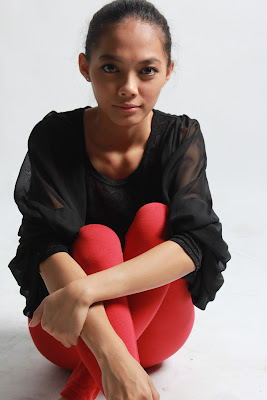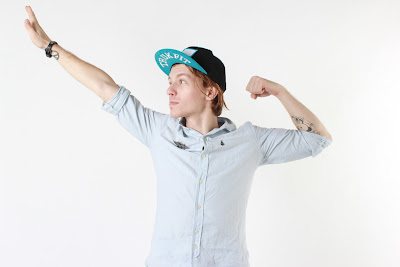This task is about High key and Low key, so I did some research.
High key (Wikipedia)
A high-key image consists primarily of light tines, without dark shadows. A photograph or printing that aims to reduce the lighting ratio present in the scene. This was originally done partly for technological reasons, since early film and television did not deal well high contrast ratios, but now is used to suggest an upbeat mood. It is often used in sitcoms and comedies. High-key lighting is usually quite homogeneous and free from dark shadows. The terminology comes from the key light (main light)
Low key
Low key as a term used in describing printings or photographs is related to but not the same as low-key lighting in cinema or photography.
A painting or image is low key if it's dominant values are dark.
After the research of high-key and low-key, Mr. Shawal gave me some lectures of studio lighting.
Basic Studio Lighting
There are 2 basic types of studio lights
1 Strobe light/Studio flash.
2 Tungsten light
Fronting lighting, to light the object from at the front, it does no shadow, images are flat and white.
Side lighting, to light up the side of the object, the shadow part and the bright part should be equal.
45 degree lighting, to light up the object from 45 degree corner, a triangle shadow at the side.
Top lighting, to light up the object from the top, it gets butterfly effects
Bottom lighting, to light up the object from the bottom, the shadow goes upwards.
Back lighting, to light up the object from behind, it's either to light up the backgrounds or light up the object, which is called silhouette.
Silhouette (Wikipedia)
A silhouette is the image of a person, an object or scene represented as a solid shape of a single color, usually black, its edges matching the outline of the subject. The interior of a silhouette is basically featureless, and the whole is typically presented on a light background, usually white, or none at all.
Main light, the one flashes and connects to the camera.
Fill-in light, to make the shadow side brighter.
Background light, behind the model.
Hair light, to highlight the hair)
Snoot, a snoot is a tube or similar object that fits over a studio light or portable flash and allows the photographer to control the direction and radius of the light beam.
After the lectures, it's supposed to be the practical work, so I tried each lighting, there they are:
High key (Wikipedia)
A high-key image consists primarily of light tines, without dark shadows. A photograph or printing that aims to reduce the lighting ratio present in the scene. This was originally done partly for technological reasons, since early film and television did not deal well high contrast ratios, but now is used to suggest an upbeat mood. It is often used in sitcoms and comedies. High-key lighting is usually quite homogeneous and free from dark shadows. The terminology comes from the key light (main light)
Low key
Low key as a term used in describing printings or photographs is related to but not the same as low-key lighting in cinema or photography.
A painting or image is low key if it's dominant values are dark.
After the research of high-key and low-key, Mr. Shawal gave me some lectures of studio lighting.
Basic Studio Lighting
There are 2 basic types of studio lights
1 Strobe light/Studio flash.
2 Tungsten light
Fronting lighting, to light the object from at the front, it does no shadow, images are flat and white.
Side lighting, to light up the side of the object, the shadow part and the bright part should be equal.
45 degree lighting, to light up the object from 45 degree corner, a triangle shadow at the side.
Top lighting, to light up the object from the top, it gets butterfly effects
Bottom lighting, to light up the object from the bottom, the shadow goes upwards.
Back lighting, to light up the object from behind, it's either to light up the backgrounds or light up the object, which is called silhouette.
Silhouette (Wikipedia)
A silhouette is the image of a person, an object or scene represented as a solid shape of a single color, usually black, its edges matching the outline of the subject. The interior of a silhouette is basically featureless, and the whole is typically presented on a light background, usually white, or none at all.
Main light, the one flashes and connects to the camera.
Fill-in light, to make the shadow side brighter.
Background light, behind the model.
Hair light, to highlight the hair)
Snoot, a snoot is a tube or similar object that fits over a studio light or portable flash and allows the photographer to control the direction and radius of the light beam.
After the lectures, it's supposed to be the practical work, so I tried each lighting, there they are:
Front light
Side Lighting
45 degree lighting
Top lighting
Bottom Lighting
Back lighting Silhouette
Then the lecturer gave me more techniques on how to shoot high-key and low-key
High-key
1, Eliminate harsh shadow.
2, Create a bright environment.
Requirements
Studio lighting, 4 pieces (2 background lights, 1 fill light, 1 key light (main light)
Low-key
1, Highly dramatic
2, indoor/dark
Requirements
One light (Min) not more than 2 lights, the lights can be everywhere
Then I did some high-key and low-key practise
Low-key
High-key
So this shoot is about environment, I did some research for the ideas.
Greenpeace (Wikipedia)
Greenpeace is a non-governmental environmental organization with offices in over forty countries and with an international coordinating body in Amsterdam, the Netherlands.
Greenpeace logo
Recycling
Recycling is processing used materials into new products to prevent waste of potentially useful materials, reduce the consumption of fresh raw materials, reduce energy usage, reduce air pollution and water pollution by reducing the need for "conventional" waste disposal.
Recycling logo
So my high-key idea is to draw these 2 logos on the models and to deliver the Greenpeace and recycling messages.
These are my final work.
My low-key idea is to rob the toilet papers around the models and deliver the message of waste, and represent how awful you look like when you waste.
Final work
In the shooting, couple of the images were shot with the slow shutter speed.
This is my High and Low assignment, hope you like it.

































No comments:
Post a Comment